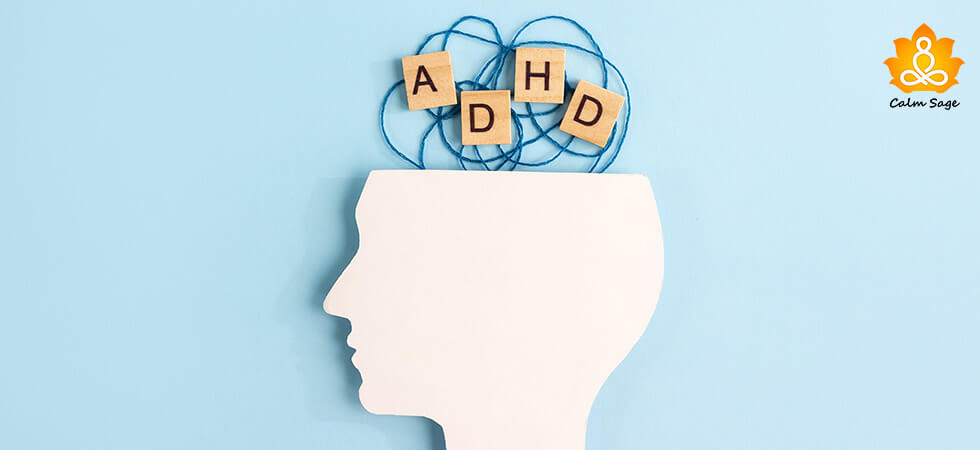Exploring The 7 Types of ADHD in Adults (With Examples)

I often find myself losing my attention on the things I’m supposed to be doing, but that would be nothing compared to what inattention means to someone living with ADHD. ADHD or Attention Deficit Hyperactivity Disorder is a common neurodevelopmental disorder that affects children and adults alike.
Even though ADHD is a brain-based disorder that impacts your ability to pay attention, control your impulses, and maintain energy levels, it has its own characteristics and strengths. While the CDC recognizes only three types of ADHD; inattentive, hyperactive-impulsive, and combined, there are an additional 7 types of ADHD as listed by Dr. Daniel Amen, a psychiatrist.
Dr. Amen has shed light on the different types of ADHD, offering insights into the strengths and features of each. And that’s what we’ll be exploring in this article today.
What is ADHD?
ADHD is a neurodevelopmental condition that impacts your ability to pay attention, and control impulses, and energy. ADHD can manifest in different ways, impacting your academic, work life, and social life. With ADHD, you must have heard another term casually attached; ADD.
ADHD and ADD (Attention Deficit Disorder) are often used interchangeably, but there are some subtle differences between the two. ADHD includes inattentiveness and hyperactivity-impulsivity, while ADD mainly includes the inattentive subtype.
ADHD symptoms can include;
- Trouble concentrating
- Short attention span
- Impulsivity
- Hyperactivity
- Disorganization
- Making impulsive or careless mistakes
- An inability to stay still
- Forgetting things, and more.
The 7 Types of ADHD in Adults
Now, let’s take a look at Dr. Amen’s 7 types of ADHD with examples;
1. Classic ADHD
As the name probably suggests, this is the most common type of ADHD. Anyone with classic ADHD could be active, restless, impulsive, and hyperactive. Classic ADHD involves low activity in the prefrontal cortex, basal ganglia, and cerebellum. This can affect the dopamine production in the brain. Dopamine is related to attention and motivation.
The symptoms of classic ADHD can be;
- Trouble paying attention to others
- Hyperactivity
- A constant need for physical activity
- Excessive talking
- Frequently interrupting others
Example: During a lecture, a student finds themselves struggling to pay attention to the lecturer’s words. The mind of the student will wander, making it harder for them to follow the lesson and stay in the present.
2. Inattentive ADHD
Another common type of ADHD is inattentive ADHD. If you live with this type of ADHD, then you have a quieter and introverted personality, and find yourself daydreaming a lot. This could manifest as being unmotivated, slow, or even lazy at times. Because there are no visible behavioral troubles in inattentive ADHD, it is often hard to diagnose.
Common symptoms of inattentive ADHD can include;
- Trouble concentrating
- An inability to pay attention to others
- Forgetfulness
- Difficulty managing time
- Poor attention to details
- Constant daydreaming
- Unmotivated or apathetic behavior
- Slow or fatigued behavior
Example: A person struggles to transition between tasks. When they are reading a book, it takes a lot of effort on their part to shift their attention to other more important tasks at hand.
3. Overfocused ADHD
Focus is a good thing, but for people with ADHD, focus can turn into overfocus, which can be a challenge. Instead of having trouble paying attention, over focused ADHD involves being hyper-focused on a specific topic while tuning out everything else.
Some common symptoms of this type of ADHD can include;
- Excessive worrying
- Getting stuck in negative thinking
- Oppositional personality traits
- Compulsive behaviors
- Trouble transitioning between activities
- Maintaining their opinions and ignoring others
- Sometimes hyperactive
Example: A person is working on a creative project, and they become fixated on minute details. While attention to detail is important, this intense focus on minor things can affect the overall progress of the project.
4. Temporal Lobe ADHD
Temporal lobe ADHD is often associated with issues in – yes, you guessed it – the temporal lobe. Our temporal lobe is responsible for activities such as learning, memory, mood stability, and aggression. If the brain activity is low in this area, then it can impact concentration, leading to temporal lobe ADHD.
Some common symptoms of this type of ADHD can be;
- Memory issues
- Auditory processing issues
- Quick temper
- Mild paranoia symptoms
- Periods of fear or confusion
- Visual hallucinations
- Negative thoughts
- Learning disorders
- Sometimes hyperactivity
Example: When feeling overwhelmed, a person may experience episodes of aggression. In some challenging situations, they might even react impulsively, expressing frustration physically or verbally.
5. Limbic ADHD
Limbic ADHD impacts the limbic area of the brain, the region that is responsible for controlling our emotional tone. Depression typically affects our limbic area. When brain activity combined with limbic activity and classic ADHD patterns is seen, then it can help determine the nature of the disorder.
Limbic ADHD symptoms can include;
- Frequent mood swings
- Negative attitude
- Low energy
- Social isolation
- Feelings of hopelessness and guilt
- Anhedonia
- Sleep issues
- Low self-esteem
- Sometimes hyperactivity
Example: Despite having intellectual ability, a person struggles with low motivation, especially when faced with tasks that don’t immediately hold their interest. This lack of motivation can affect different areas of their life.
6. Ring of Fire ADHD
Ring of Fire ADHD is known to show high brain activity, and it is said that people with this type of ADHD have trouble shutting off their minds. This can make some of their thoughts and emotions feel overwhelming. If medications, especially stimulants, are taken with this type of ADHD, then it can make the symptoms worse.
Some common symptoms of Ring of Fire ADHD can include;
- Unpredictable behavior
- Sensory processing sensitivity
- Cyclic mood swings
- Inflexible thinking
- Oppositional personality behavior
- Impulsivity
- Periods of rudeness
- Grandiose thinking
- Racing thoughts
- Anxious behavior
- Irritability
- Sometimes hyperactivity
Example: A person is highly sensitive to stressors in their environment. Anticipation of a stressful event or a change in routine can throw them off balance, leading to increased stress levels, and impacting their ability to focus and pay attention to their surroundings.
7. Anxious ADHD
Out of the 7 types of ADHD, the last one is Anxious ADHD. This type of ADHD involves low activity in the prefrontal cortex with overactivity in the basal ganglia. According to Dr. Amen, this is related to anxiety. Furthermore, it is believed that ADHD symptoms can worsen with anxiety and stress.
Common symptoms of Anxious ADHD can include;
- Frequent anxious behavior
- Physical stress symptoms
- Freeze response in stress
- Extreme nervousness
- Catastrophic thinking
- Conflict avoidance
- Fear of being judged
Example: A person is highly sensitive to criticism or social judgment, even if the criticism they receive is constructive. Feedback or comments can trigger anxiety and self-doubt, impacting their confidence and self-esteem.
How to Get Help For ADHD:
Seeking help for ADHD is simple and easily accessible. Help, when it comes to ADHD, involves a multi-faceted approach. You can consult with a professional for a diagnosis and ADHD valuation. When it comes to treating ADHD, treatment approaches can include behavioral therapy, medications, stimulants, and social support.
Moreover, creating a supportive environment and establishing a strong support network can help in managing ADHD effectively, in children, teens, and adults.
Wrapping Up…
Knowing the 7 types of ADHD as characterized by Dr. Daniel Amen allows for more effective treatment and management. Whether it’s classic ADHD, hyperactivity, inattentiveness, or a mix of them, understanding the specific type can help you get the right help and learn the right strategies to deal with it.
If you or your loved one is diagnosed with ADHD, then remember that help is within reach, and with the right support, you can live and thrive with ADHD in all aspects of your life.
I hope this article helped you understand the 7 types of ADHD by Dr. Amen. Let me know what you think about these types in the comments box below.
Take Care!




















